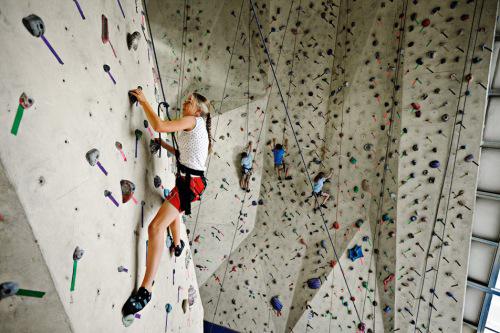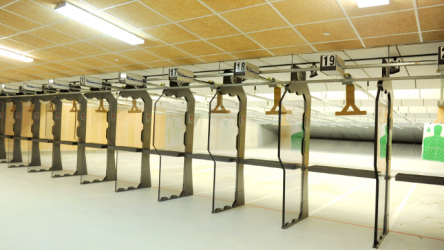
Indoor rock climbing is a completely new and rising activity that is drawing substantial enthusiasm from rock climbers. Basically, indoor rock climbing is done on a simulated rock climbing wall found in gyms and its primary objective is to present rock climbers an easy means to learn how to perform varied aspects of rock climbing in a controlled and safe atmosphere.
Indoor rock Climbing is without a doubt a derivative of Rock Climbing where people ascend artificial or man-made Climbing walls. Climbing holds are attached to these artificial walls with the intention to simulate Real Mountain. The procedures, equipment, and training are like that of Rock Climbing.
Indoor Climbing have grown to become very notable in the 80s when Indoor Rock Climbing gyms started introducing many people both young and old to Climbing. Indoor Climbing’s acceptance amplified a lot more when individuals started to give training to people who are enthusiastic about it. There are reasons why a number of people prefer to do Indoor rock Climbing. Some regions either don’t have a good natural rock to climb or it is extremely unsafe to climb them due to bad weather or sliding rocks. Additionally, gyms are usually more accessible compared with normal Climbing destinations.
Why Indoor Rock Climbing?
Listed below are some reasons why Indoor Rock Climbing is preferred:
- It’s not your normal recreational activity. Indoor Climbing has benefits including enhancing your fitness, and your self-esteem and sense of achievement.
- It builds excellent social interactions due to the fact that Indoor Climbing calls for interaction with other skilled climbers to learn and develop your skills.
- Indoor rock Climbing is good for team building, enhancing trust, and friendship as some classes require many people to complete a climb.
Differences Between Indoor And Outdoor Rock Climbing
It is normal for those who desire to take up Climbing to contemplate which of the 2 versions would better suit them.
Below are a few of the differences between Indoor Rock Climbing and Outdoor Rock Climbing:
- Indoor Climbing is good for individuals who are seeking constant practice before they explore the real world, or for climbers who are eager to train throughout the year.
- Surfaces in Indoor Climbing can be easily spotted, as detected by holds on the man-made wall. With natural walls, holds are usually not noticeable, making the climb trickier.
- It is much easier to focus indoor rock climbs since distractions are noticeably reduced unlike in Outdoor Rock Climbing where the atmosphere alone can be a distraction; wind conditions, weather, bugs etc.
- Indoor Rock Climbing has various levels which climbers can attempt and master. Outdoor Climbing routes are varied since mountain holds are not fixed. Every slope and crack may serve as hand and foot hold for the climber.
- Indoor Climbing encourages competition due to the fact many of the walls are customized for competitive climbers. Outdoor Climbing is focused on the act of climbing itself, pushing the climbers to the limit.
Indoor climbing is now popular at present than previously. It allows safe, climate-controlled climbing in an organized atmosphere. Virtually all indoor rock climbing gyms make available different types of climbing including bouldering. Many of them provide rental gears, training and organized adventures. Indoor climbing is an excellent way to build the basics you need for outdoor climbing as well.






